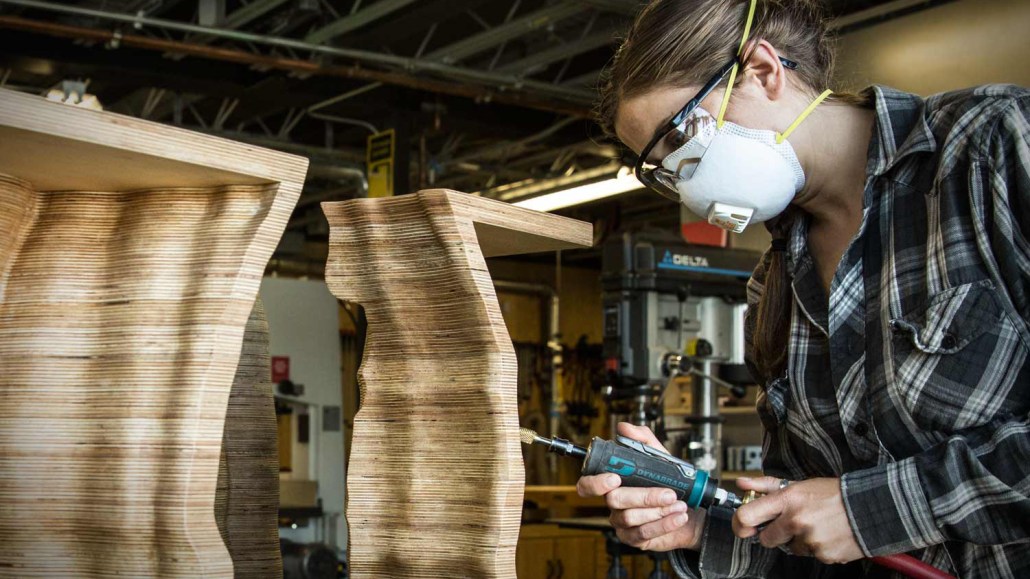

It’s a great time to be a DIY enthusiast. Whether they’re 3-D printing toys, upcycling old computers or making jewelry, today’s tinkerers are part of a vibrant global community. Do-it-yourselfers are found in every country, culture and community — and, crucially, in highly engaged online communities.
For digital marketers, there are lessons to be learned from the rapid rise and sustained growth of Maker Culture. What’s the best way to translate real-world relationships into online engagement, for example? Once a community is built, how is it best nurtured? And where does one find new members?
For answers, let’s consider the DIY community.
Community content wants to be free
Given the size and highly engaged natured of the do-it-yourself community, standout projects already receive their fair share of free publicity, as users share their own and others’ content on social networks, especially Reddit.
But eyeballs add up quickly when journalists and bloggers partner get involved, and share this content with their readers. Even a shallow dive into Lifehacker and Popular Mechanics reveals countless DIY projects. On Gizmodo, one DIY-based post, “How To Build an Awesome Last Minute Superhero Halloween Costume,” has racked up more than 100,000 views. The content was simple, but compelling: half a dozen DIY Halloween costumes, all with superhero themes. With this post, everyone wins — Gizmodo readers loved the item, the editors enjoyed the traffic and the costumes’ authors are appreciated for their creativity and enterprise.
Of course, virality can’t be manufactured. But content distribution must be central to any online community-building campaign. And digital marketers must be prepared to take advantage of these lightning strikes.
Promote promotion
User-generated content, or UGC, was once considered a novel way for publishers to juice their audience for free contributions. Today, users themselves are the publishers, and they’re eager to promote themselves.
This doesn’t mean online community organizers can sit back and watch. At Instructables, for example, the social media team makes use of every channel under the sun, actively featuring community creations. On Facebook, brand posts generally receive hundreds of likes and dozens of comments, and DIY videos have been viewed on YouTube a total of 11 million times. Of course, Twitter, Tumblr, Instagram and Pinterest play important roles in the DIY community, too.
This is how online community is nurtured and energized. Digital marketers must view every day as an opportunity to create new dialogues that will engage, excite and motivate their audience.
Acknowledge mobile ubiquity
At this point, there’s nothing new to be said about the importance of mobile devices in our lives. It’s been nearly eight years since the iPhone debuted, which means most elementary school kids have never known a world without swipe, pinch and zoom.
Yet, mind-bogglingly, some marketers still define their audiences according to their devices, and often prioritize desktop over mobile. To serve the DIY community, Instructables placed a top priority on producing friendly, functional smartphone apps. Not just for iOS and Android, but Windows 8, too.
Instead of thinking about device affinity, digital markers should consider community affinity — and accept that mobile messaging is required for any online community-building effort.
Love the noobs
New members are the lifeblood of any community. But, both online and off-, newcomers can’t be expected to understand the rites, rituals and standards that define any given community. Mentorship is crucial.
Teaching others is intrinsic to the DIY ethos. By sharing their successes (and failures), experienced members help guide newbies. They encourage them to join the conversation, to challenge themselves and tinker with conventions. These new members bring fresh ideas to the group, in turn invigorating the veterans.
When building an online community, digital marketers must create an environment that welcomes newcomers. The best communities have forgive-and-forget in their DNA.
Incubate in unusual places
Just ask any business-owner — it’s not enough to hang one’s shingle and wait for customers.
This new generation of DIY’ers wouldn’t exist without active incubation, both institutionally (as with Autodesk Instructables’ Artist in Residence program) and informally, on the ground level in schools and affinity groups. Communities must actively recruit new members wherever they’re found.
Digital marketers, too, must actively look for new members who will bring diversity to the conversation. It’s often helpful, of course, to define and target consumers along thousands of variables. But it’s also limiting. Without diversity, a community can become an echo chamber, leading to stagnation and withering.
When building an online community, digital marketers must look for leads in unexpected places.
More from Digiday

Podcast companies turn to live events to capture growing advertiser spend
The surge in the number of live podcast events in 2025 reflects a broader shift: advertisers are betting bigger on podcasts — not just as an audio channel but as a full-fledged creator economy play.

Best Buy, Lowe’s chief marketing officers explain why they launched new influencer programs
CMOs launched these new programs in response to the growing importance of influencers in recommending products.

Agencies create specialist units to help marketers’ solve for AI search gatekeepers
Wpromote, Kepler and Jellyfish practices aim to illuminate impact of black box LLMs’ understanding of brands search and social efforts.





